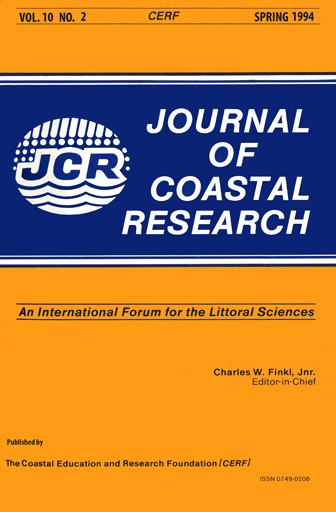Erosional Features of Coastal Beachrock and Aeolianite Outcrops in Natal and Zululand, South Africa
Keywords:
Intertidal platform, chemical erosion, supratidal zone, bioerosion, algal induration, carbonate sedimentsAbstract
The contribution of chemical processes to the erosion of beachrocks and aeolianites within the intertidal zone has long been a contentious issue. This paper briefly summarises previous work and describes new observations from the southeast coast of southern Africa. Field observations of isolated seawater bodies on the intertidal platform established a range of pH values, ascribed to diurnal variation. The contribution of biochemical processes to chemical erosion of beachrock is highlighted. Seventeen different erosive features occurring in coastal outcrops of beachrocks and aeolianites are described and illustrated. The majority of these erosional features occur on intertidal outcrops of beachrock/aeolianite, making a crude zonation of the topography possible. The physical dimensions and spatial distribution of erosional features within the intertidal and supratidal zones are described. Processes responsible for the formation of the erosional features include: physical erosion: chemical erosion; bioerosion; bioarmouring and algal induration. The possible modes of formation of each of the erosional features is discussed. Three different types of intertidal platforms occur on this coast: (1) Type 1 intertidal platforms comprise beachrock or aeolianite, sculpted by the retreat of a sea-level notch into a rocky headland; (2) Type 2 intertidal platforms comprise planed surfaces of beachrock or aeolianite which extend landwards under a cover of beach sand; (3) Type 3 intertidal platforms comprise multiple layers of seaward dipping beachrock which are preferentially eroded into a stepped appearance.


